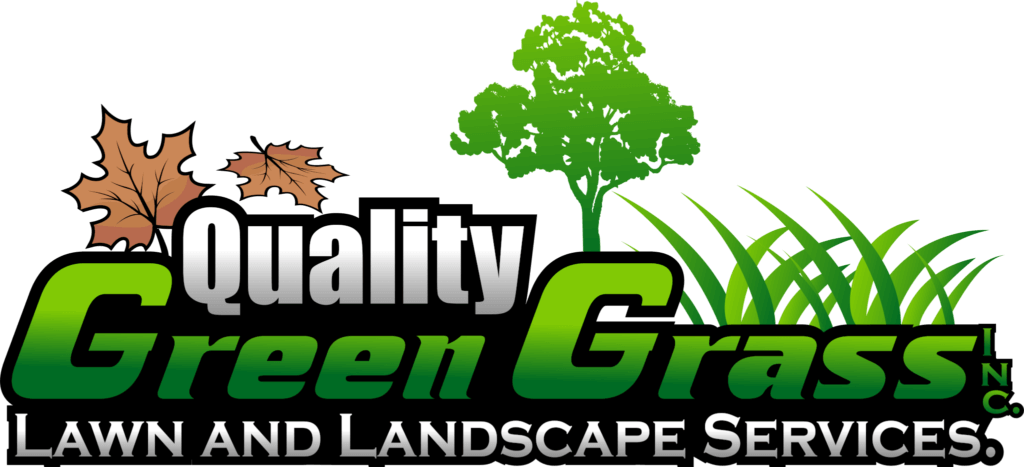Term
- "Mulched" is the past form of "mulch," meaning laying mulch around plants.
Purpose
- Mulch improves soil fertility, retains moisture, reduces weeds, keeps roots cool in summer, warm in winter, and adds nutrients to soil as it decomposes.
Materials
- Organic: Straw, wood chips, leaves.
- Inorganic: Rocks, plastic, fabric.
Environmental Benefits
- Prevents soil erosion, supports biodiversity, conserves water, recycles natural waste, reduces need for chemicals.
Application Tips
- Choose mulch based on garden needs.
- Best times: Early spring, late autumn.
- Depth: 2-4 inches; keep 3 inches from plant stems.
- Maintain quality seasonally.
Pest Control
- Certain mulches like cedar deter pests naturally.
Mulching is essential for garden health and environmental benefits.
Your perfect lawn isn’t just about mowing—it starts with knowing what "mulched" means. Imagine rich layers of mulch protecting and nourishing your grass. In today's post, we'll break down the "mulched" definition and why it matters to your lawn's health. Have you ever wondered how mulch can enhance your property value, save time, and promote eco-friendly practices? Let's dive into how mulching transforms your yard into a lush, green paradise!
What Does the Term 'Mulched' Mean?
Have you ever heard the word "mulched" and felt puzzled about its meaning? In short, "mulched" is the past form of "mulch," a verb gardeners know well. When someone says a plant has been "mulched," they mean it has had mulch laid around it. Mulch is a layer of material, usually organic, placed on top of the soil. The main goal is to improve soil fertility, keep moisture, and reduce weeds.
So, why is mulching important for gardens?
Let’s take roses as an example. Imagine a rose garden full of healthy blooms. Mulching around roses can help them thrive by boosting soil nutrients and keeping pests away. But it’s not just about roses. Many plants benefit from being mulched. The material locking in moisture helps keep the soil cool in hot weather. It also stops weed growth by blocking sunlight. When organic mulch, like leaves or straw, breaks down, it adds nutrients to the soil.
Now, let's dive into the mulching process. Mulching is easy and makes a big difference in plant health. First, clear any weeds or debris from around the plant. Then, spread the mulch about two to three inches thick. Make sure to leave a small space around the plant stem clear to prevent rot. Different materials, like wood chips or leaf mold, work well. Each type of mulch has its pros and cons. Some prefer organic options for added nutrients, while others might choose inorganic types like stones for long-term use.
In essence, mulching is much more than a gardening chore. With each layer laid, a garden gains richer soil, healthier plants, and fewer weeds. Knowing how to mulch can transform any gardening experience, turning a simple activity into a fruitful adventure. Whether you’re nurturing roses or veggies, understanding and using mulch will help turn your garden into a thriving ecosystem.
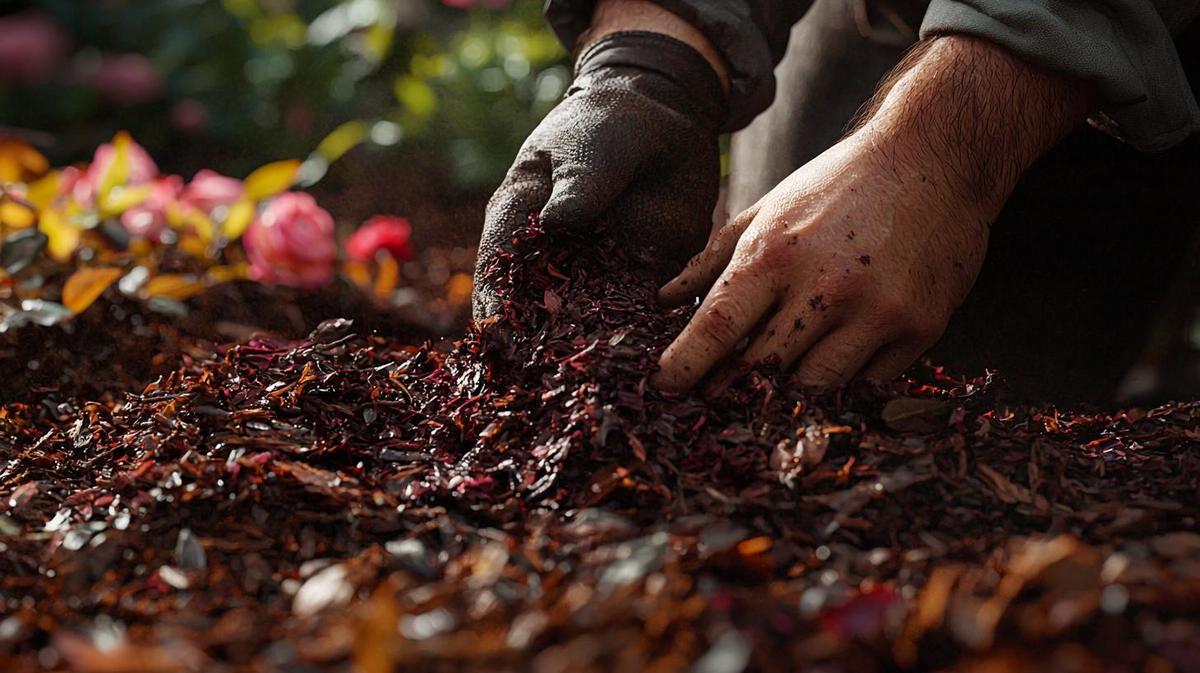
What Are the Benefits of Mulching?
Mulching can do wonders for your garden. It is more than just spreading bits of bark or leaves over the soil. Mulch helps plants stay strong and healthy by keeping the soil moist. When you blanket soil with mulch, it protects root systems from the summer heat and winter cold. This makes it easy for plants to grow without stress.
One of the biggest benefits of using mulch is that it keeps weeds away. Weeds can take water and nutrients away from your plants. A layer of mulch acts like a shield, stopping weeds from seeing the light they need to grow. This lets your plants thrive without the competition.
Mulch also helps keep soil healthy and full of nutrients. When it sits on the ground, it slowly breaks down. This feeds the soil with organic matter, which boosts its fertility. Mixing nutrients back into the soil like this is great for plant growth.
Mulching has protective benefits too. It guards the soil from heavy rain that could wash away its top layer. Also, when mulch covers the soil, it stops the sun from baking it, which helps keep water in. You won't have to water your plants as much when you use mulch.
Plant health sees real positives from mulch. It keeps roots cool in hot weather and warm in the cold. Healthy roots mean strong plants with better chances of fighting disease. In time, you'll see mulch's impact on plant growth in the form of lush, thriving gardens.
Proper mulching also offers various ways to deal with pests. Some types of mulch, like cedar, have natural oils that keep bugs away. Others, like pebbles, create barriers that pests find hard to cross. Choosing the right mulch for your garden can lead to fewer pests nibbling away at your hard work.
To learn more about mulch types and their many uses, check out this informative page I found. It covers the ways mulch supports a healthy, happy garden.
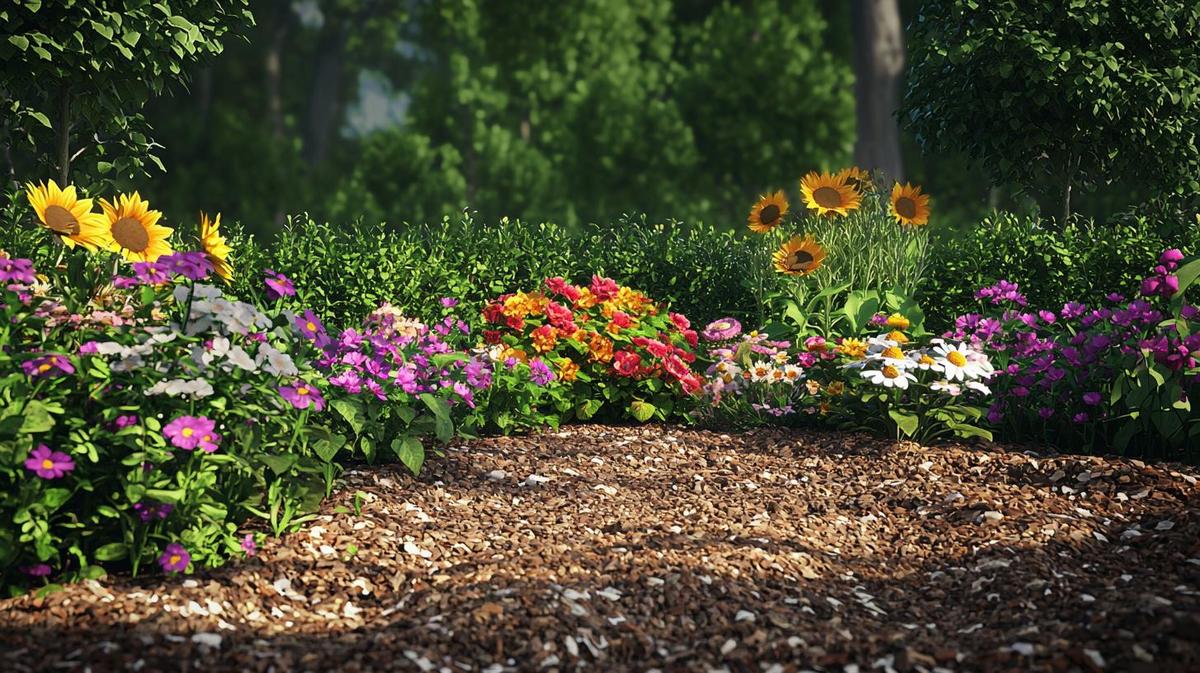
What Types of Mulching Materials Are Available?
When it comes to mulching, your choices are vast. You can divide mulching materials into two main types: organic and inorganic. Organic mulches include things like straw, wood chips, and leaves. Inorganic mulches could be rocks, plastic, or landscape fabric.
Organic mulch is made from materials that come from nature. This type of mulch breaks down over time. It adds nutrients to the soil as it decomposes. Straw is a cheap option that works well for vegetable gardens. It helps keep the soil moist and blocks weeds. Wood chips are common around trees and shrubs. They look nice and also aid soil health. Leaves, which many people have in abundance, provide rich nutrition to the garden.
Inorganic mulch does not break down like organic mulch. Rocks are long-lasting and can act as barriers to hold soil in place. Plastic and fabric mulches prevent weeds and help retain soil moisture. However, since they do not decompose, they do not add nutrients to the soil.
So how do you choose between organic and inorganic mulch? The answer depends on what your garden needs. Are you looking to improve soil fertility? Then organic mulch is your friend. Do you need a long-term solution or want to create a neat, permanent walking path? In that case, inorganic mulch might be best suited for you.
Some common mulch synonyms and terms you might hear include "covering," "blanket," and "protective layer." These terms may come up when discussing mulching with other garden enthusiasts.
Choosing the right type of mulch changes how your garden grows and thrives. Every type has its pros and cons, so balance your needs with the benefits each mulch provides. With the right choice, mulch can significantly boost your gardening efforts.
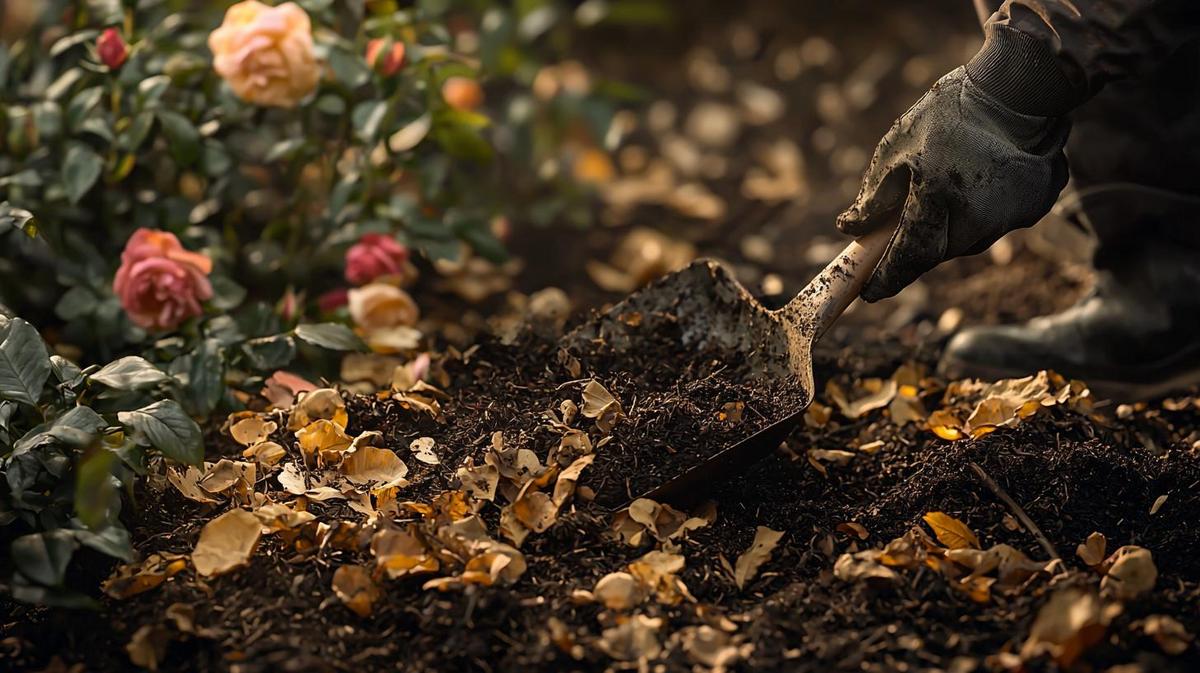
How Does Mulching Benefit the Environment?
Mulching helps the earth in many ways. One big help is stopping soil erosion. Erosion prevention with mulch happens as mulch covers the ground. It keeps the rain from washing soil away and holds the soil firmly in place. With mulch, less soil ends up in rivers, keeping our water cleaner.
Another gain is creating homes for small organisms. Mulch as a habitat for organisms gives bugs, worms, and tiny animals a place to live. This diversity is good for the soil and plants. The organisms break down the mulch into nutrients, enriching the soil.
Mulching also helps keep moisture in the soil. This means plants need less water, which saves precious water resources and helps during dry times. Less watering means less stress on our groundwater and taps, which is a win-win.
Furthermore, mulch can keep the temperature of the soil stable. During hot days, it keeps the soil cooler, and in the cold, it keeps plants warmer. This helps plants grow better and reduces the shock from extreme weather.
From an environmental angle, using leaves, grass, and wood chips as mulch recycles natural waste. Instead of clogging landfills, these materials help gardens and lawns. This limits pollution and makes our cities greener.
Mulch also controls weeds better. By blocking sunlight, it keeps weeds from growing. Fewer weeds mean less need for harmful chemicals, protecting the environment further.
In sum, mulch is like a superhero for the environment, fighting erosion, saving water, and boosting biodiversity. It changes nature's waste into a useful resource, helping plants grow without hurting the planet. In my view, every garden can benefit from mulch. Its role in protecting the environment makes it a valuable tool for anyone who cares about nature.
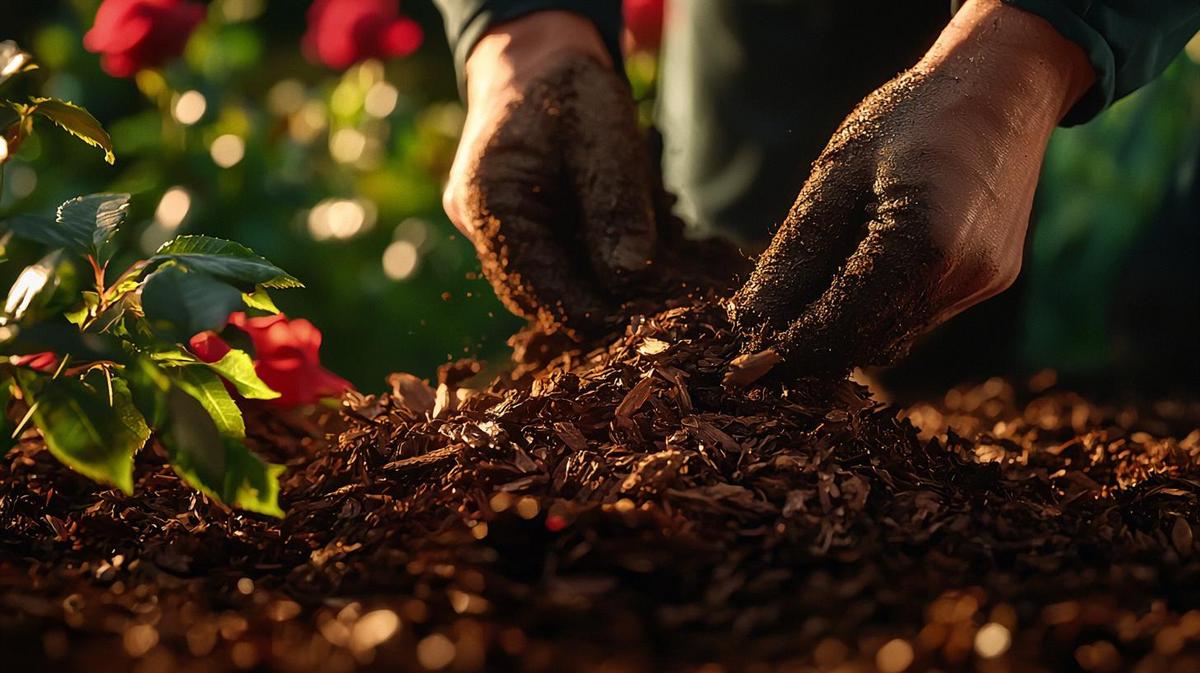
How Can Mulch Be Applied Effectively?
Applying mulch effectively is vital for healthy gardens. You must know the best way to apply mulch to get good results. Here’s how you can do it right.
First, choose the right mulch. Organic options like wood chips or leaf mold add nutrients. Inorganic options such as gravel won't break down as quickly. Your choice depends on your garden's needs.
Next, consider the timing. When is the best time to mulch? For most gardens, early spring is ideal. Your plants will be ready for growth, and mulch keeps them safe from late frosts. But, adding mulch in late autumn can protect against winter chills.
Now, let’s talk about depth. How much mulch should you use? A layer of two to four inches is perfect. It keeps moisture in and weeds out. Too much can block air and water from your plants. Start a few inches from your plant's base to let its stems breathe.
Spacing is important, too. How far should you keep mulch from stems? About three inches from the stem is best. This gap prevents rot and lets roots develop healthily.
Pay attention to mulching around roses and similar plants. Roses benefit from mulch for improved soil and pest control. Apply mulch evenly to ensure your plant thrives all year.
Finally, check your mulch every season. How does it look? If it's breaking down, add a bit more. Don’t forget to clear old mulch that gets compacted.
Applying mulch the right way is key. It keeps plants healthy and the soil fertile. Remember the steps and timing for the best results in your garden. Your plants will thank you!
Conclusion
To sum it up, "mulched" involves applying material on soil to boost plant health. Mulching protects plants, enriches soil, and prevents erosion. It uses both organic and inorganic types, offering benefits like habitat creation for tiny creatures. Applying mulch correctly ensures your lawn thrives and maintains beauty. Mulching is not only a simple task but also a vital one for lush lawns. So, adopt these eco-friendly practices and enjoy a stunning, healthy yard!
